How Good Are Frozen Beef Patties After Best by Date
We do know one thing to be very true: finding foods you can love—and that will love you back—truly is possible, if you know what to look for. And that goes for frozen foods, too. While they often get a bit of a bad rap, microwave meals aren't are as nutritionally destitute as you might think—in fact, they can even help lead to quick weight loss: A study in the Journal of the Academy of Nutrition and Dietetics found that when you opt for a frozen meal from the grocery store, you'll consume an average of 253 fewer calories and 2.6 fewer grams of saturated fat per day than if you stopped at a fast-food joint.
But like anything else in life, it's all about making the right choices when it comes to frozen foods.
"While there are plenty of frozen foods that aren't considered very nutritious, there are plenty that are healthy options; it just comes down to how processed the food is," says Diana Gariglio-Clelland, Next Luxury's registered dietitian, and certified Diabetes Care and Education Specialist. "Processed foods tend to be loaded with sodium and preservatives, as well as added sugars to enhance taste—frozen TV entrées are a prime example."
What makes for healthier frozen food?
If you're scanning the entrée section, there are some things you want to make sure the meal you're buying has, according to Eat This, Not That! medical board expert, Leslie Bonci, MPH, RD, CSSD, LDN.
- At least 20 grams of protein
- More fiber
- Less saturated fat
- Low in sodium
- Contains vegetables
The easiest way to know if the frozen foods you're stocking up on are healthy options? It all about doing a little reading before you toss it into your shopping cart.
"It's important to turn over the nutrition label and take a look at the ingredients list," says Mackenzie Burgess, RDN, and recipe developer at Cheerful Choices. "Choose frozen foods with a short list of ingredients you can actually pronounce. This is a sign that the product is less processed and contains more whole-food ingredients."
Taking a few extra minutes to spot if a frozen food has a long list of questionable ingredients or is packed high in sodium can make all the difference.
"It's best to keep your sodium intake under 2,300 milligrams per day, yet the average American consumes around 3,400 milligrams of sodium per day," says Gariglio-Clelland. "To determine if a frozen food is really high in sodium, check the nutrition facts label. If one serving of the food (keeping in mind that people often eat more than one serving at a time) provides more than 20% of the daily value for sodium, that means it's pretty high in sodium and will get you to that 2,300 milligrams per day limit more quickly."
You'll also want to "be aware of added sauces, cheese, or gravy—these added components will increase the sodium content as well as the saturated fat," adds Mia Syn, MS, RDN.
Which frozen foods should you always be stocked up on?
It's as simple as fruits and vegetables.
"The best frozen foods to have in your freezer should have minimal ingredients and be as close to their natural form as possible. Frozen fruits and vegetables without added sauces or sugar are the best to have on hand. In fact, frozen produce can be richer in nutrients than fresh, especially if it's not currently in season in your area," says Gariglio-Clelland.
Yes, frozen fruits and veggies are just as good for you (if not better!) as their fresh counterparts, and, come with other great benefits—they last longer and don't cost as much.
"Frozen fruits and vegetables contain comparable vitamins, minerals, and phytonutrients compared to fresh produce. When produce is frozen, it is picked at its peak and is frozen shortly after harvesting to preserve the nutritional quality and taste," explains Syn. "Frozen produce may actually be more nutrient-dense compared to fresh produce because produce can lose its nutritional value the longer it sits out past its harvest date due to enzymatic activity and oxidation. Additionally, frozen produce is not only convenient and lasts longer than fresh, [but] it is typically more affordable."
The frozen foods aisles can be a bit intimidating, but an easy place to start is with the basics.
"Frozen fruit, such as berries, mango, pineapple, peaches, and bananas are great for making smoothies or adding as a topping to yogurt or oatmeal," says Syn. "Frozen veggies, such as broccoli, cauliflower, and carrots are great for adding to quick meals like stir-fries and breakfast egg scrambles. "
So now that you're armed with these frozen food tips, here's a list of the best frozen food options in your supermarket. Uncover which specific products are the healthiest so you can stock up the next time you're grocery shopping. And be sure to add any of The 7 Healthiest Foods to Eat Right Now.
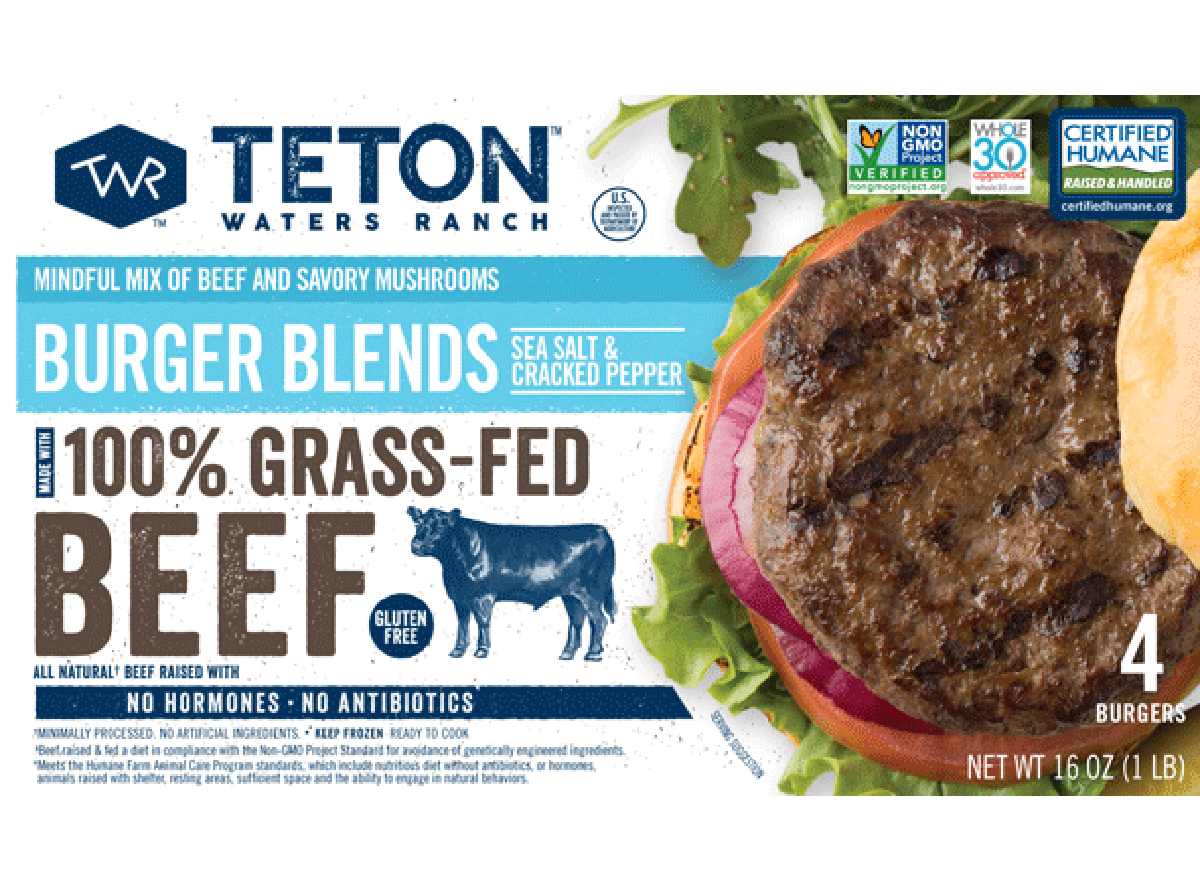
Per 1 patty, Sea Salt and Cracked Pepper: 190 calories, 15 g fat (6 g saturated fat), 290 mg sodium, 2 g carbs (0 g fiber, <1 g sugar), 15 g protein
No one can argue about how convenient frozen burgers are. But we can probably all agree that their taste isn't always what we expect it to be. You won't have to make any sacrifices with these burgers from Teton Waters Ranch. Made with 100% grass-fed beef, these patties come preseasoned so all you have to do is throw them on the grill or in a skillet and dinner is ready in minutes.
"These burgers come in three different flavors with just a handful of real ingredients, including 100% grass-fed beef," says Burgess. "I like to choose grass-fed beef because it contains 2-4 times more healthy omega-3 fats. Simply heat and add alongside leafy greens and roasted sweet potatoes for a balanced meal.
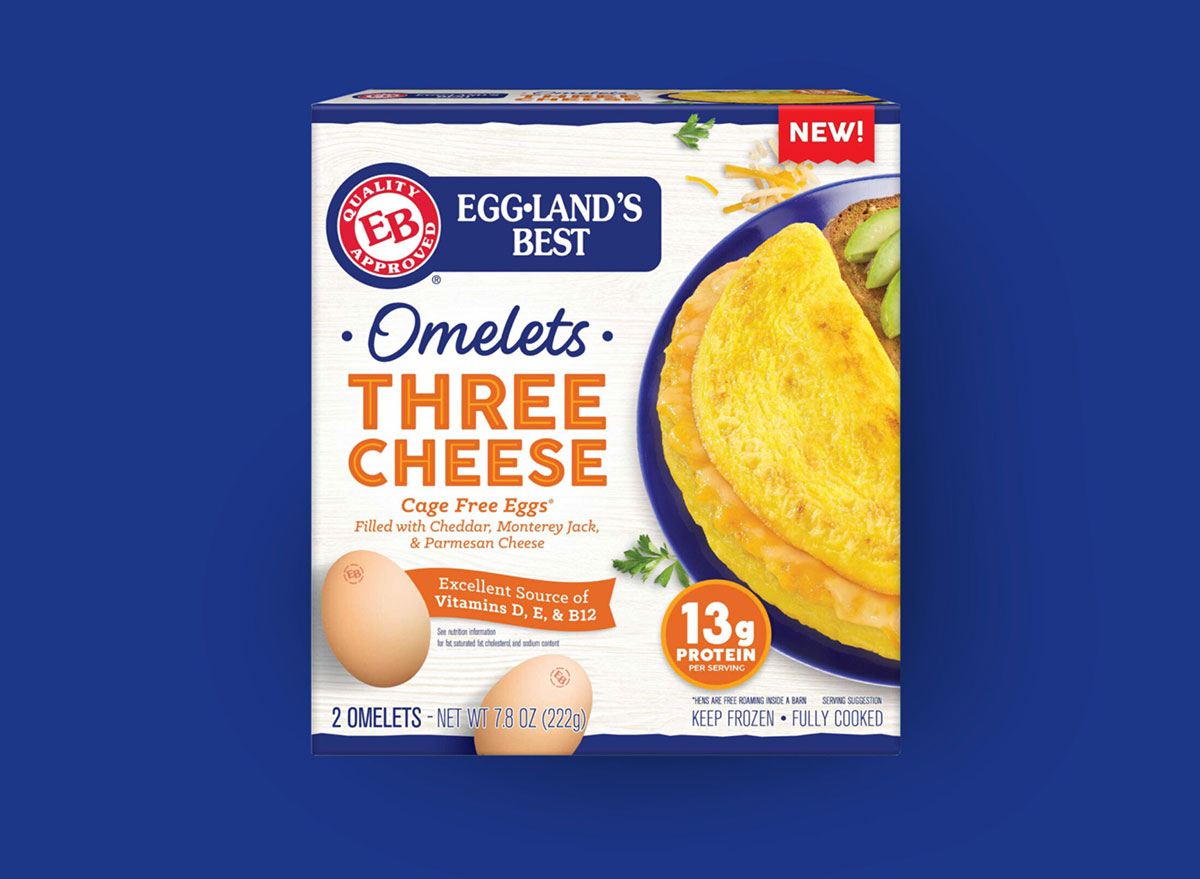
Per 1 omelet: 210 calories, 16 g fat (6 g saturated fat), 610 mg sodium, 3 g carbs (0 g fiber, 1 g sugar), 13 g protein
"I love Eggland's Best Three Cheese Frozen Omelets for a protein-packed breakfast that is ready in just two minutes," says Lauren Manaker MS, RDN, LD, and author of Fueling Male Fertility. "And since one omelet is an excellent source of vitamins D, E, B12, B2, and B5, I know I am loading my body up with important nutrients first thing in the morning. It is nice to have a quick and convenient omelet option that doesn't leave me with a bunch of dishes to clean up on busy mornings."
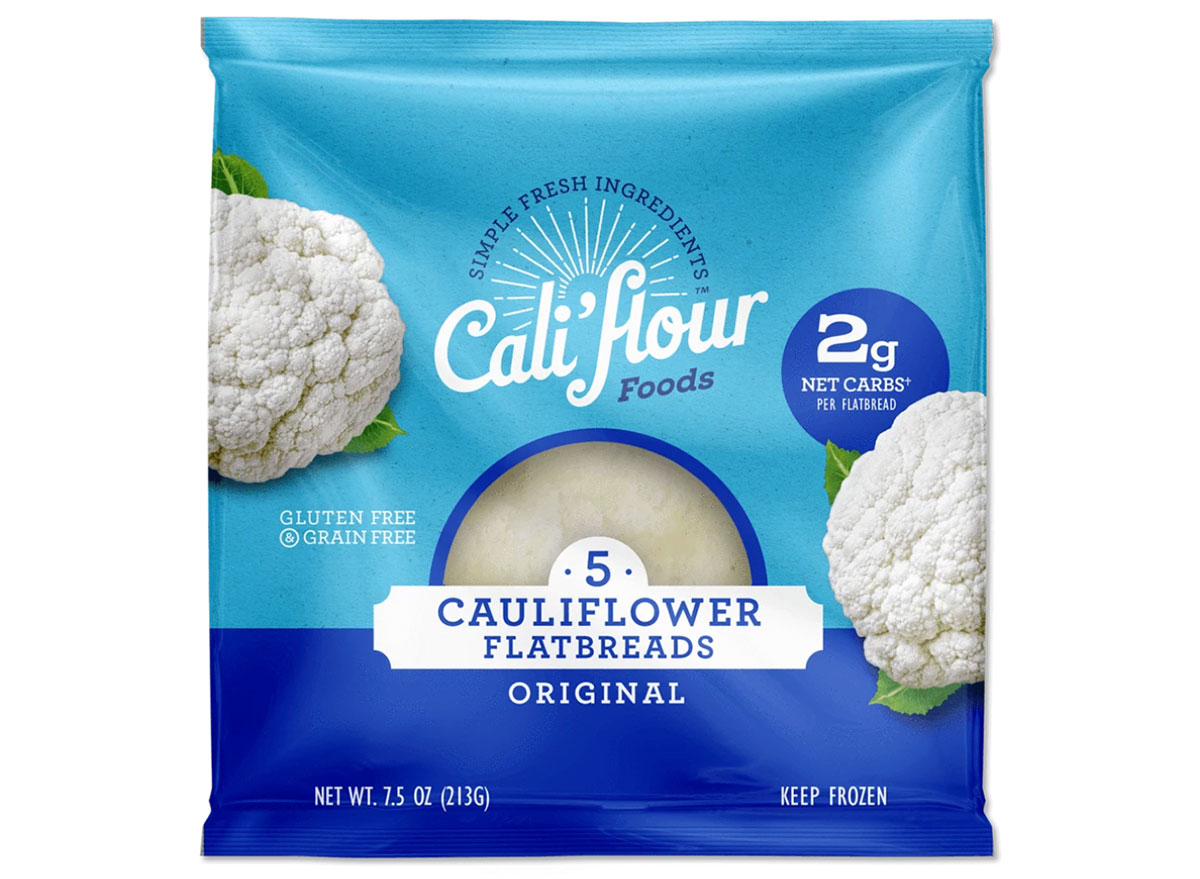
Per 1 flatbread: 50 calories, 2.5 g fat (1.5 g saturated fat), 120 mg sodium, 3 g carbs (1 g fiber, 1 g sugar), 5 g protein
"Sneak some extra veggies into your day by adding Cali'flour Foods Flatbreads to your meals," suggests Burgess. "These frozen flatbreads are made from just a few simple ingredients–mozzarella, egg whites, and cauliflower. I also love how they are suitable for different dietary preferences and provide important nutrients like vitamin C, fiber, and iron. Try making your own breakfast tacos by toasting these flatbreads and topping with eggs and avocado slices."
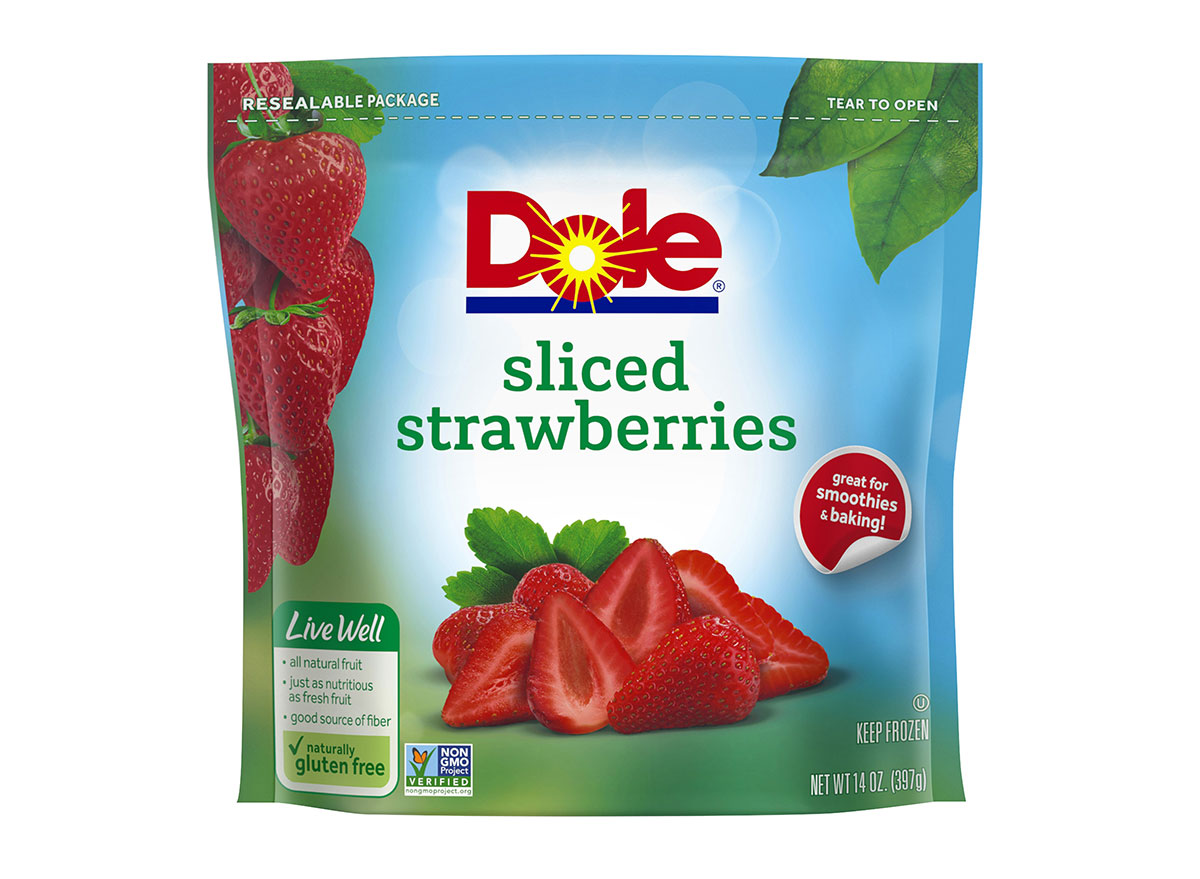
Per serving, 1 cup: 50 calories, 0 g fat (0 g saturated fat), 0 mg sodium,13 g carbs (3 g fiber, 6 g sugar), <1 g protein
If there's one frozen food all of the experts we spoke to said they always have in their freezer, it's frozen strawberries!
"I lean on frozen foods almost every day, and having a well-stocked freezer can be a lifesaver. Frozen strawberries have a permanent spot in my freezer," Manaker says. "Frozen strawberries are the most widely available frozen fruit source of vitamin C. Naturally sweet and low in calories, one serving of strawberries has less sugar than an apple and only half the calories of a banana."
It's a versatile fruit you can easily incorporate into tons of different recipes and meals.
"I also always keep frozen berries in my freezer. This way I know they are picked when they are in season and ripe and then frozen. I use those in smoothies, or to top yogurt or oatmeal," says Karen Z. Berg MS, RD, CSO, CDN.
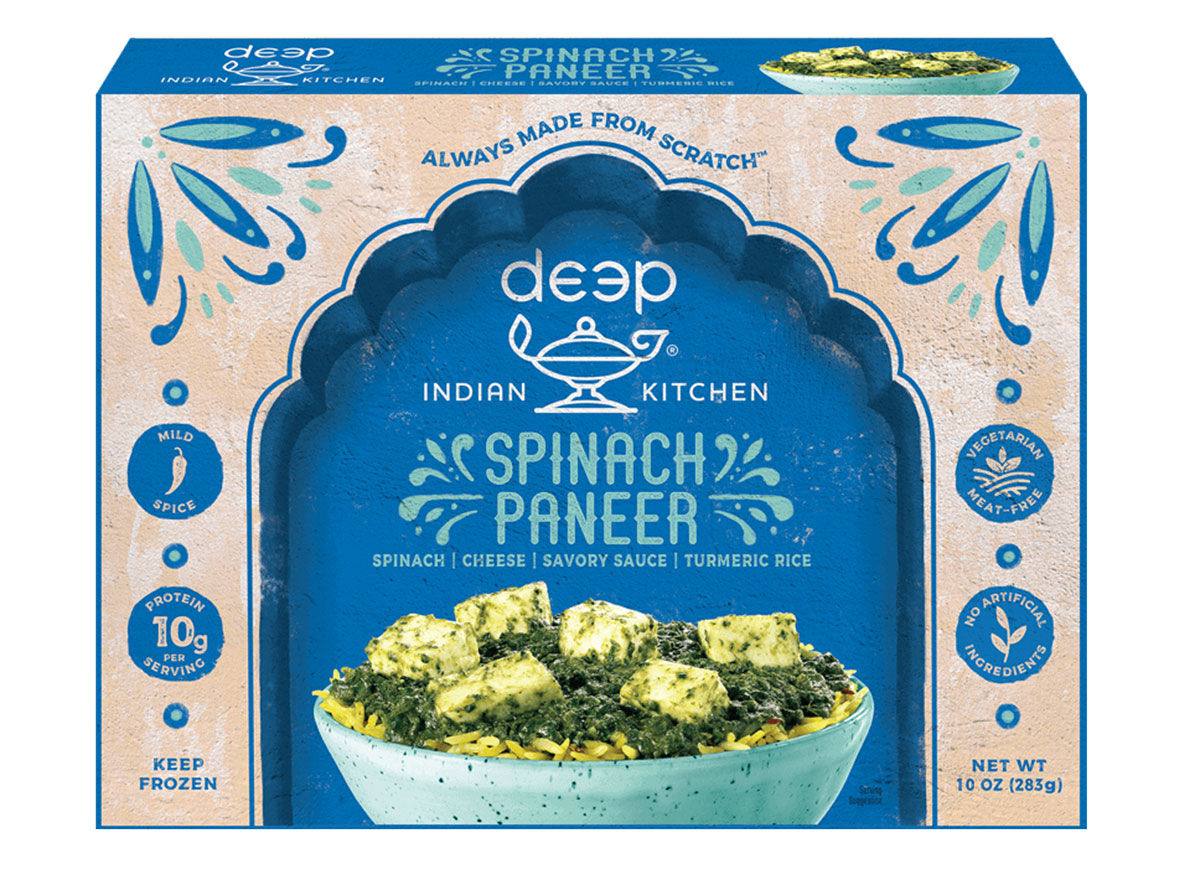
Per serving: 340 calories, 18 g fat (3 g saturated fat), 650 mg sodium, 35 g carbs (3 g fiber, 4 g sugar), 10 g protein
"Deep Indian Kitchen Spinach Paneer is one of my favorite solutions for busy days when lunchtime rolls around. It is made with such high-quality ingredients and is so easy to nuke and enjoy," says Manaker.
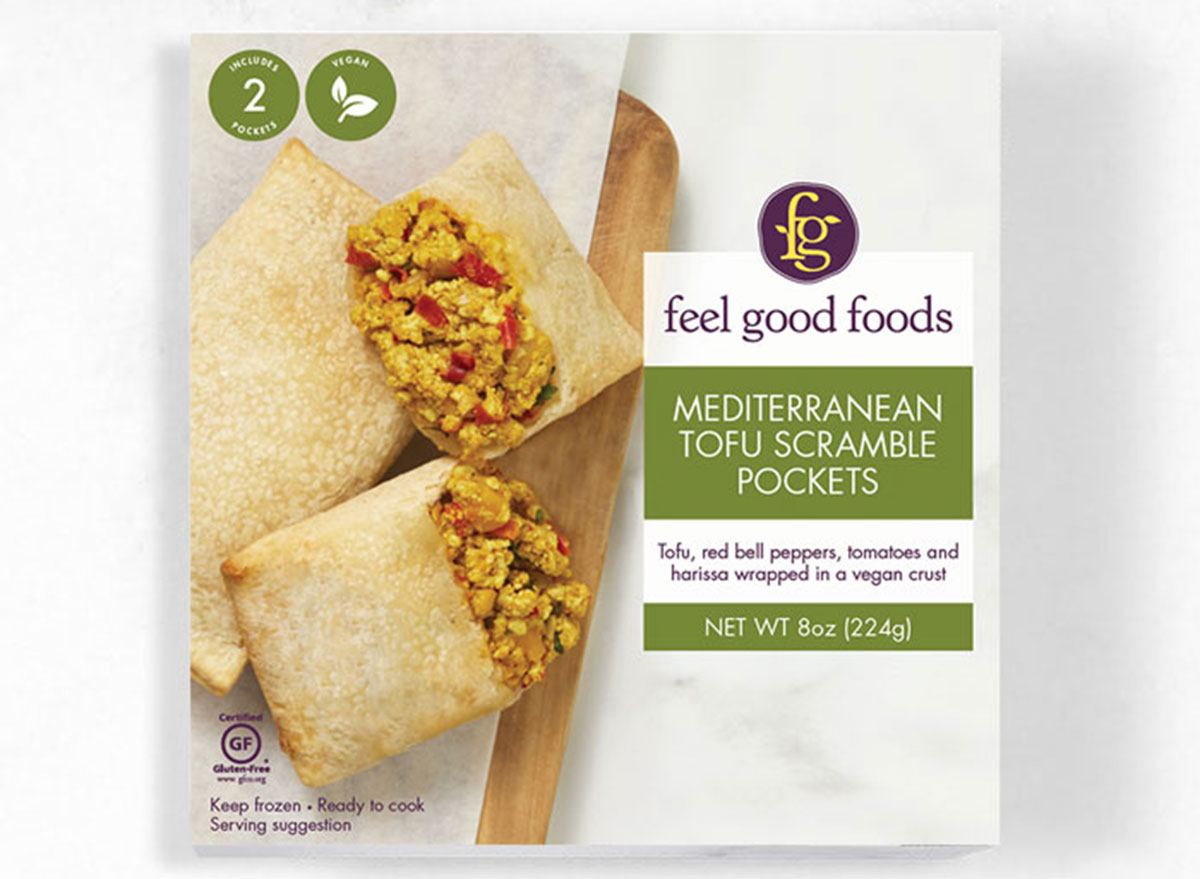
Per pocket: 210 calories, 6 g fat (2.5 g saturated fat), 440 mg sodium, 32 g carbs (3 g fiber, 1 g sugar), 7 g protein
"Feel Good Foods Mediterranean Tofu Scramble Pockets are a healthy breakfast option for busy days," Manaker says. "Loaded with plant-based protein and lots of yummy flavors, this breakfast pocket is a healthier version of those old-school hot pockets and are super-satisfying."
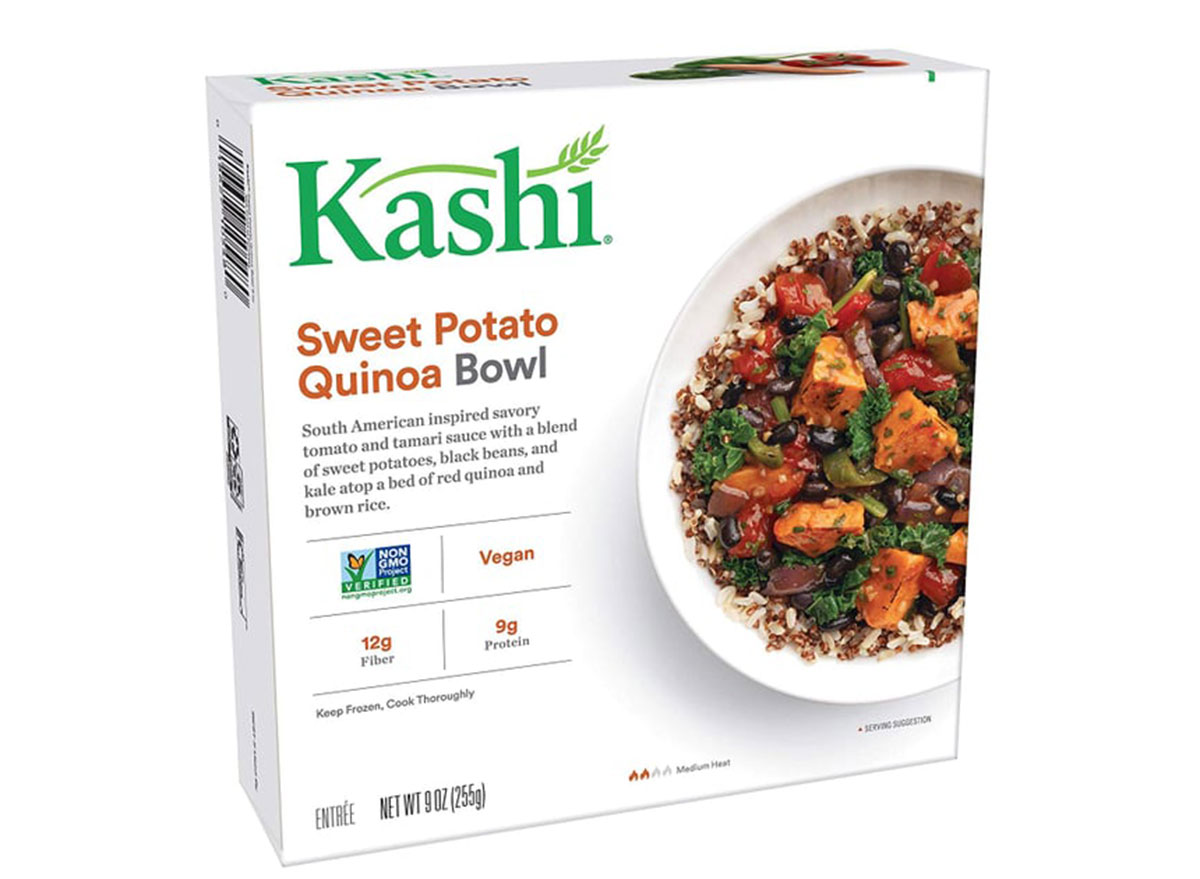
Per 1 meal: 270 calories, 6 g fat (1 g saturated fat), 280 mg sodium, 48 g carbs (12 g fiber, 11 g sugar), 9 g protein
Syn is a fan of this bowl that blends roasted sweet potatoes, black beans and kale, all over a bed of red quinoa and brown rice.
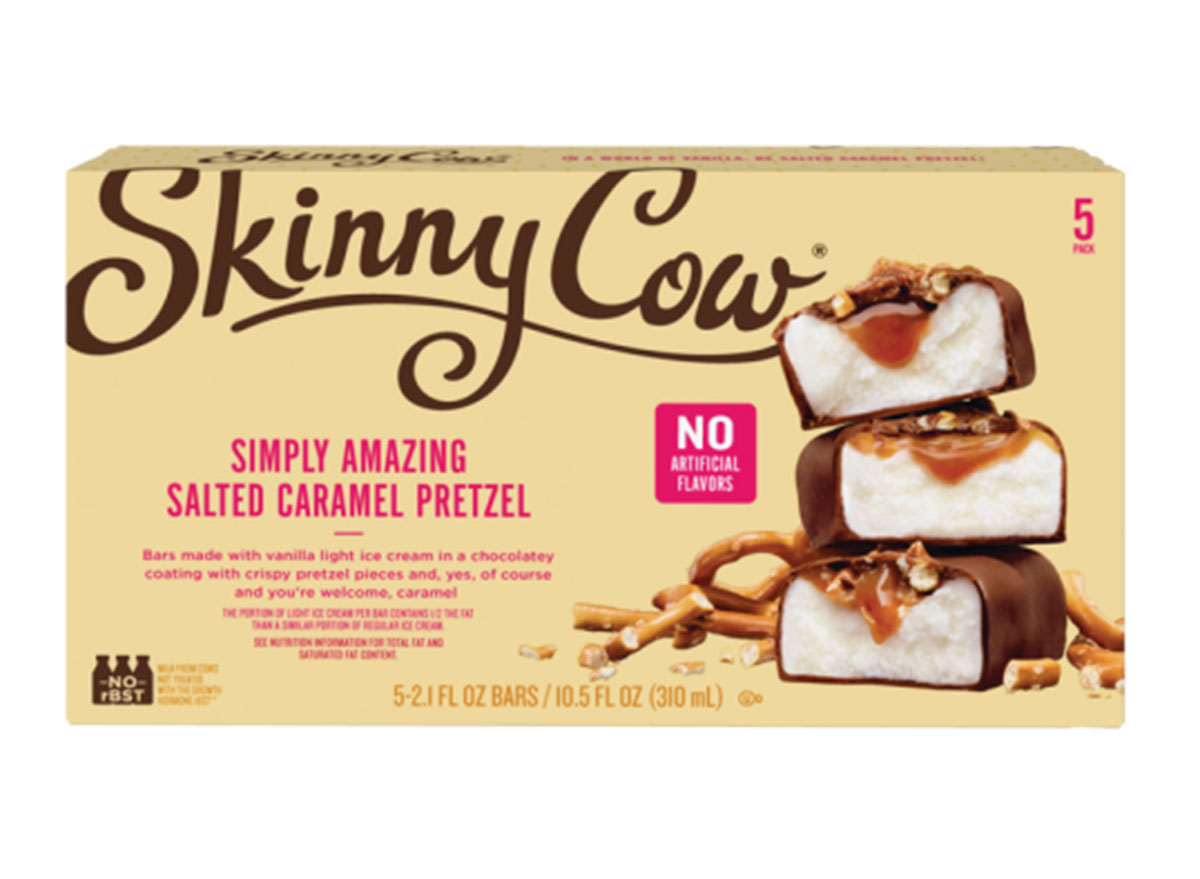
Per 1 bar: 160 calories, 9 g fat (7 g saturated fat), 85 mg sodium, 17 g carbs (1 g fiber, 13 g sugar), 2 g protein
"I make my own energy balls and freeze them for a healthy sweet treat, but I also love Skinny Cow's Salted Caramel Pretzel Bars for a nice low-calorie treat," Berg says.
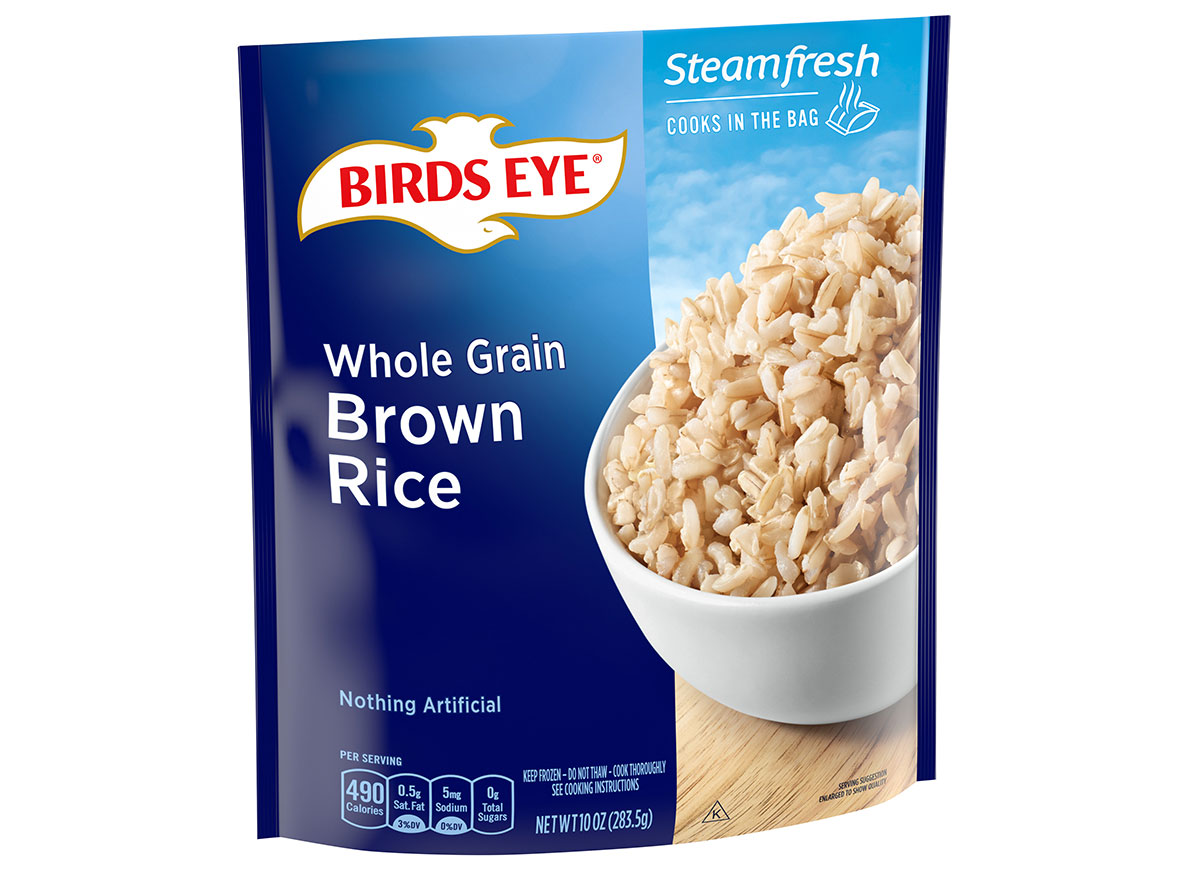
Per 1 bag: 240 calories, 1.5 g fat (0 g saturated fat), 0 mg sodium, 53 g carbs (2 g fiber, 0 g sugar), 5 g protein
"Brown rice is a staple ingredient that is perfect to add to everything from grain bowls to stir fries. It's also a great source of fiber which helps us feel fuller longer after a meal," Burgess says. "Unfortunately, it takes about 45 minutes to prepare it from scratch. To save time, purchase frozen brown rice that's already cooked. Then, all you have to do is pop it in the microwave for a few minutes and it's ready to go."
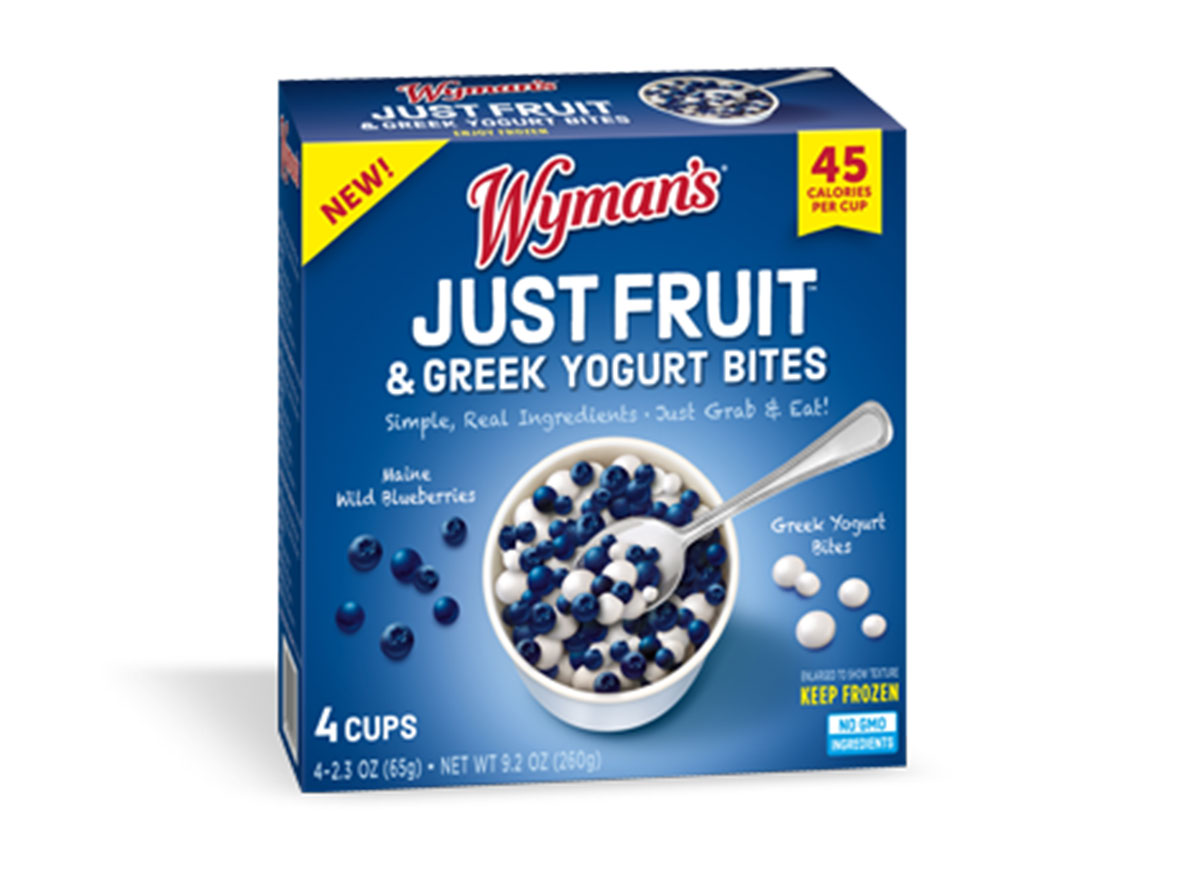
Per serving, 1 cup: 45 calories, 0 g fat (0 g saturated fat), 10 mg sodium, 10 g carbs (2 g fiber, 7 g sugar), <1 g protein
"Wyman's Just Fruit is a pre-portioned snack made with real frozen wild blueberries and Greek yogurt. I love enjoying these snacks when I need something sweet," Manaker says.
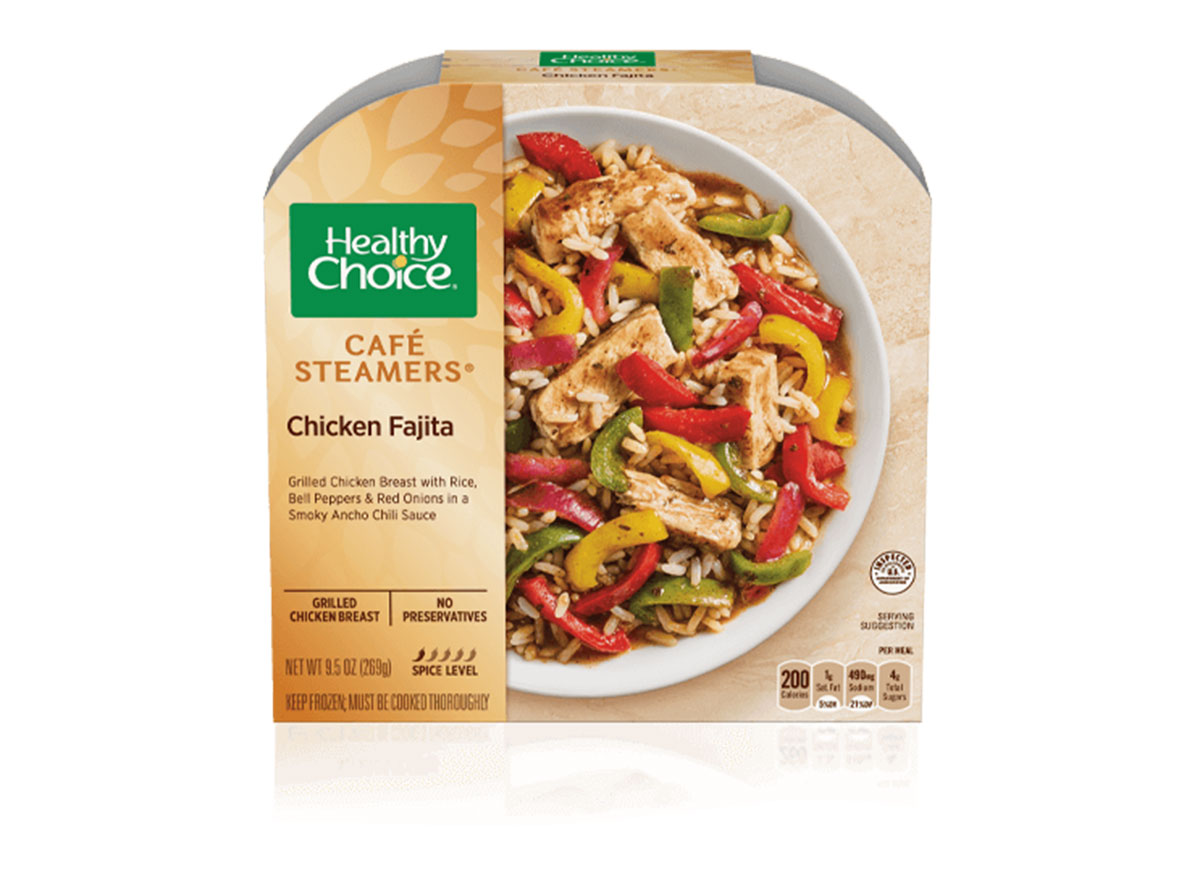
Per 1 meal: 200 calories, 4.5 g fat (1 g saturated fat), 490 mg sodium, 23 g carbs (2 g fiber, 4 g sugar), 15 g protein
This chicken fajita rice bowl is bursting with Tex-Mex flavor. Here, tender grilled chicken breast, bell peppers, and red onions are topped with smoky ancho chili sauce, served over white rice. It's no wonder it's one of Syn's favorites frozen meals!
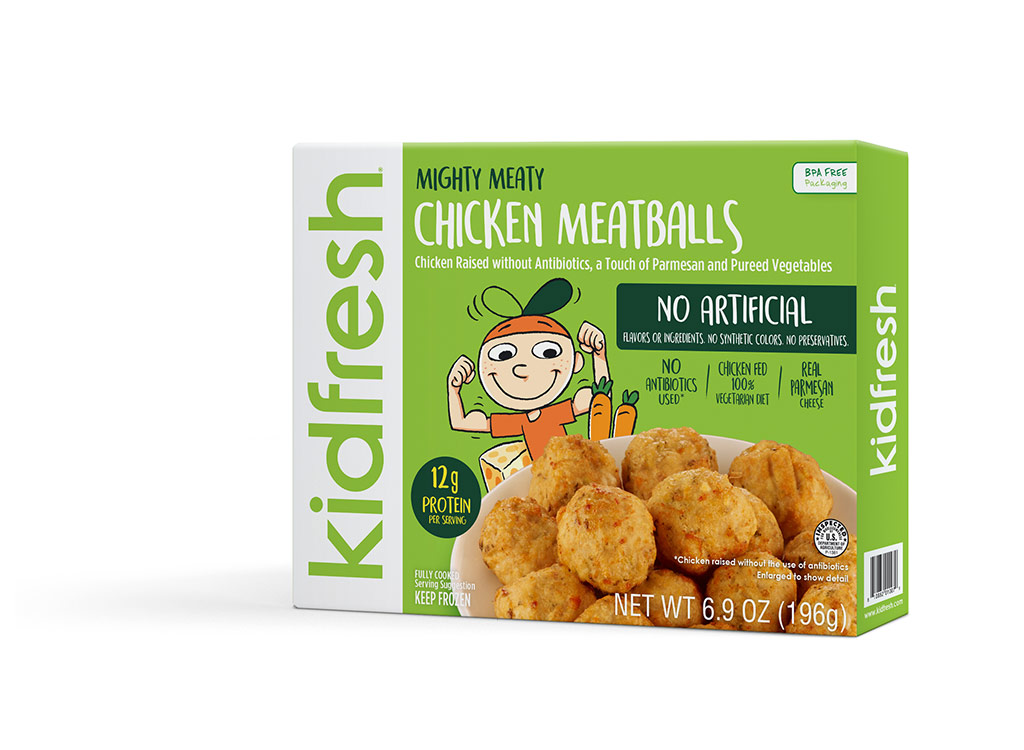
Per serving, 5 nuggets: 130 calories, 4 g fat (0.5 g saturated fat), 250 mg sodium, 13 g carbs (2 g fiber, 0 g sugar), 12 g protein
The chicken nugget craving hits everyone at one time or another. Go ahead and stock up on this brand's version, which is great for any member of your family. (No matter their age!)
"For my daughter, I love KidFresh frozen chicken nuggets," Manaker says, "They are coated with hidden 'goodies' like cauliflower and my daughter loves them."
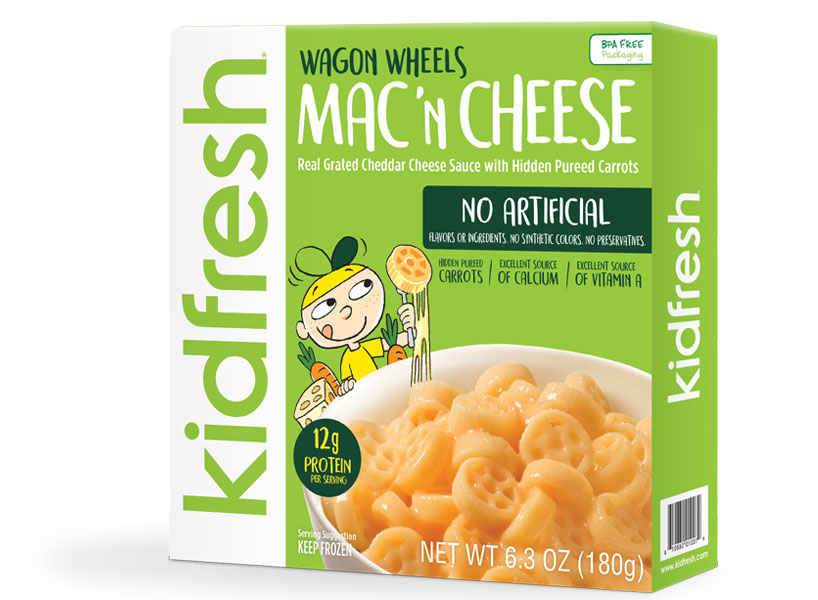
1 package: 280 calories, 9 g fat (5 g saturated fat), 400 mg sodium, 36 g carbs (1 g fiber, 4 g sugar), 12 g protein
Diffuse the comfort food's flab-producing potential by opting for this light rendition of mac and cheese. It omits artificial flavors, colors, and preservatives you'll find in other frozen mac and cheese meals.
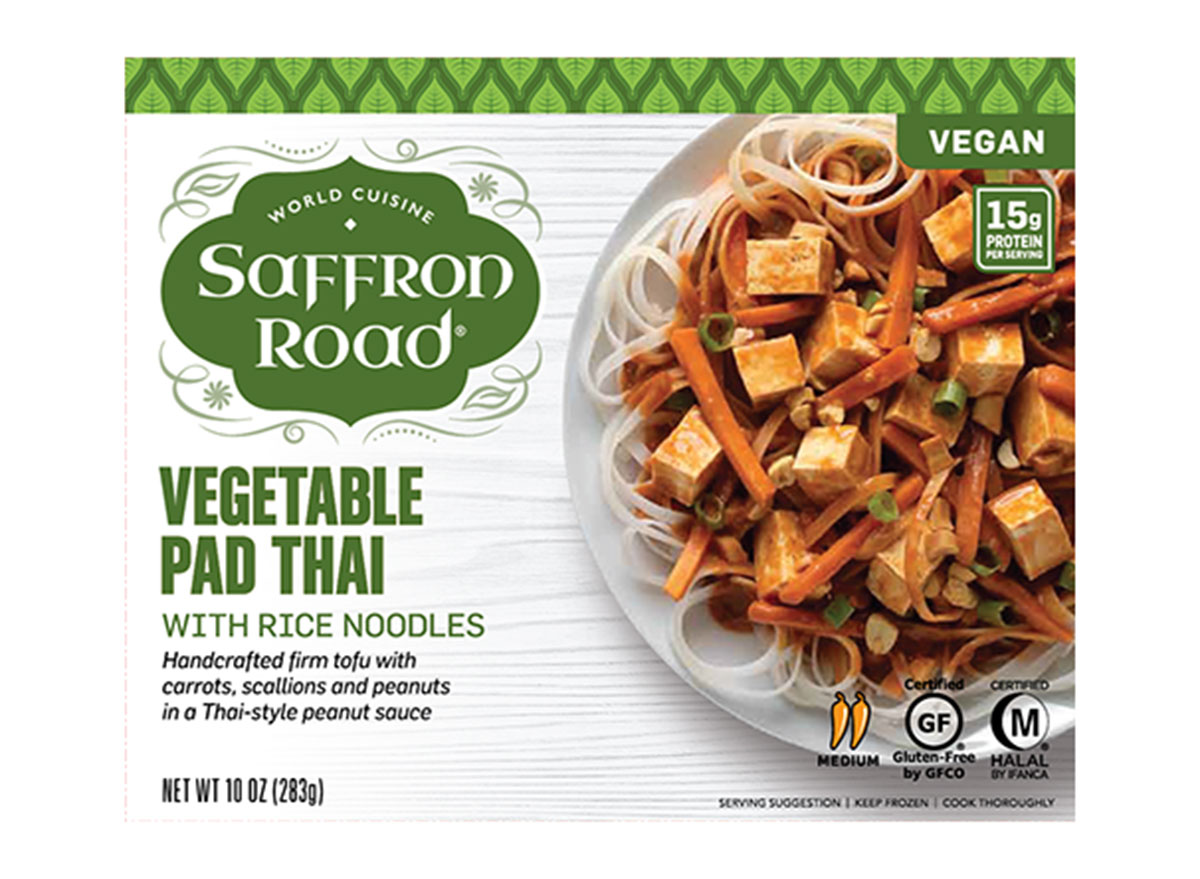
Per container: 420 calories, 13 g fat (2.5 g saturated fat), 600 mg sodium, 64 g carbs (2 g fiber, 18 g sugar), 15 g protein
Big tofu fan? Then you're going to want to stock up on this vegetable pad thai dish from Saffron Road that Syn says is one of her favorite frozen entrées.
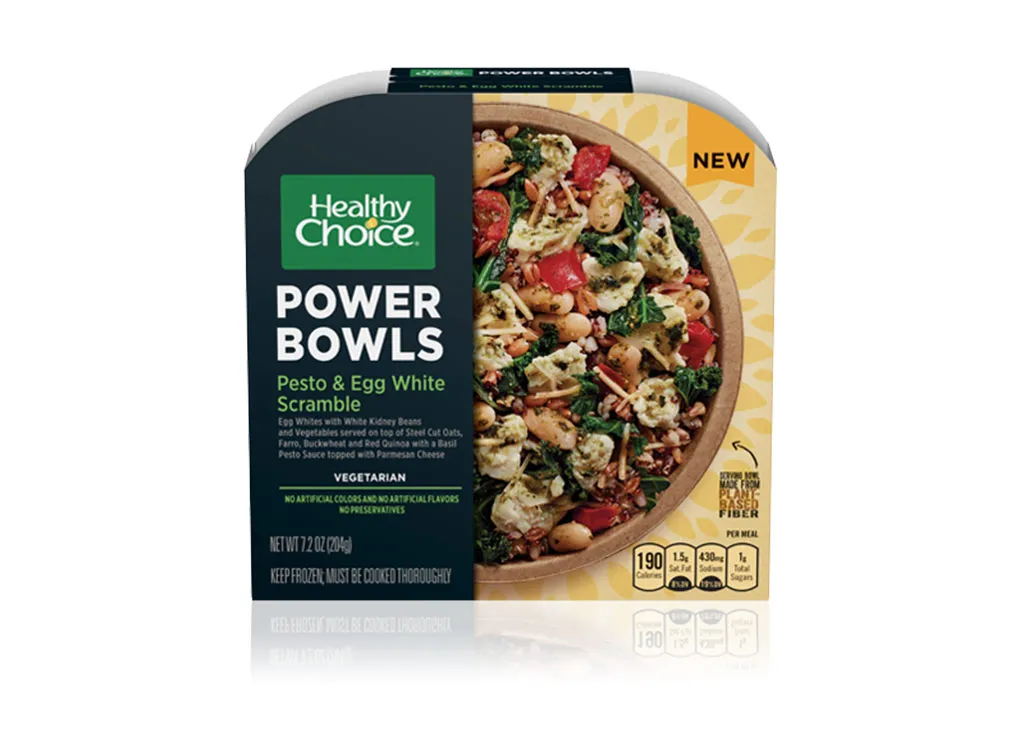
Per bowl: 190 calories, 6 g fat (1.5 g saturated fat), 430 mg sodium, 21 g carbs (5 g fiber, 1 g sugar), 12 g protein
This hearty breakfast power bowl meets both our fiber and protein criteria, deeming this pick one of our best a.m. meals to wake up to.
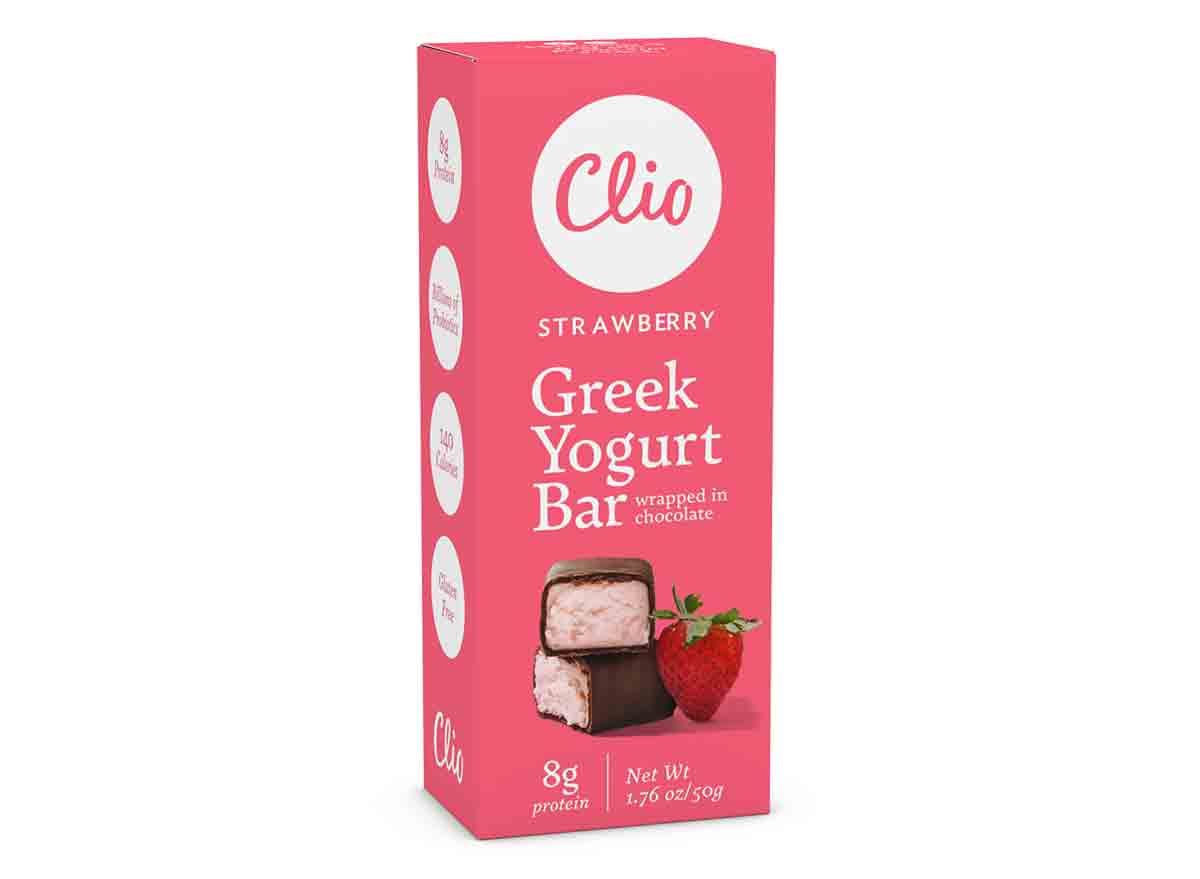
Per 1 bar: 140 calories, 7 g fat (4 g saturated fat), 31 mg sodium, 13 g carbs (1 g fiber, 10 g sugar), 8 g protein
Greek yogurt, chocolate, and strawberries. You don't find a frozen treat with a simpler recipe and as much protein.
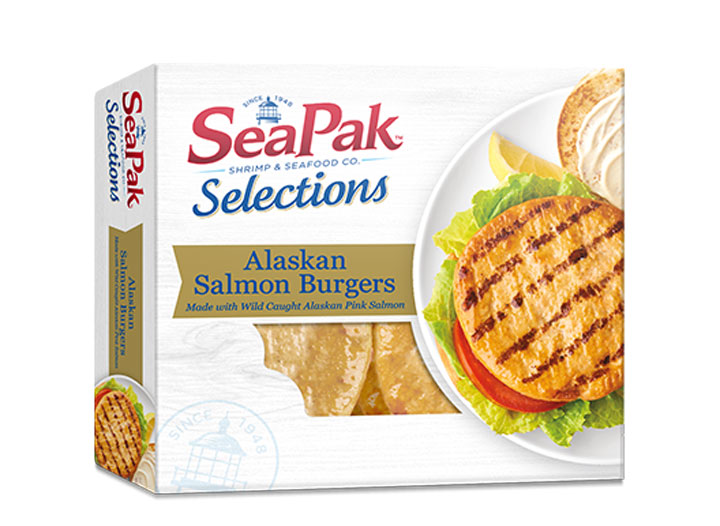
Per 1 burger: 110 calories, 5 g fat (0.5 g saturated fat), 340 mg sodium, 0 g carbs, 16 g protein
Toss this on the grill, then sandwich it between a toasted bun with arugula, grilled onions, and Greek yogurt spiked with olive oil, garlic, and fresh dill. Pair it with one of these fat-burning soups, and you have a full, healthy meal.
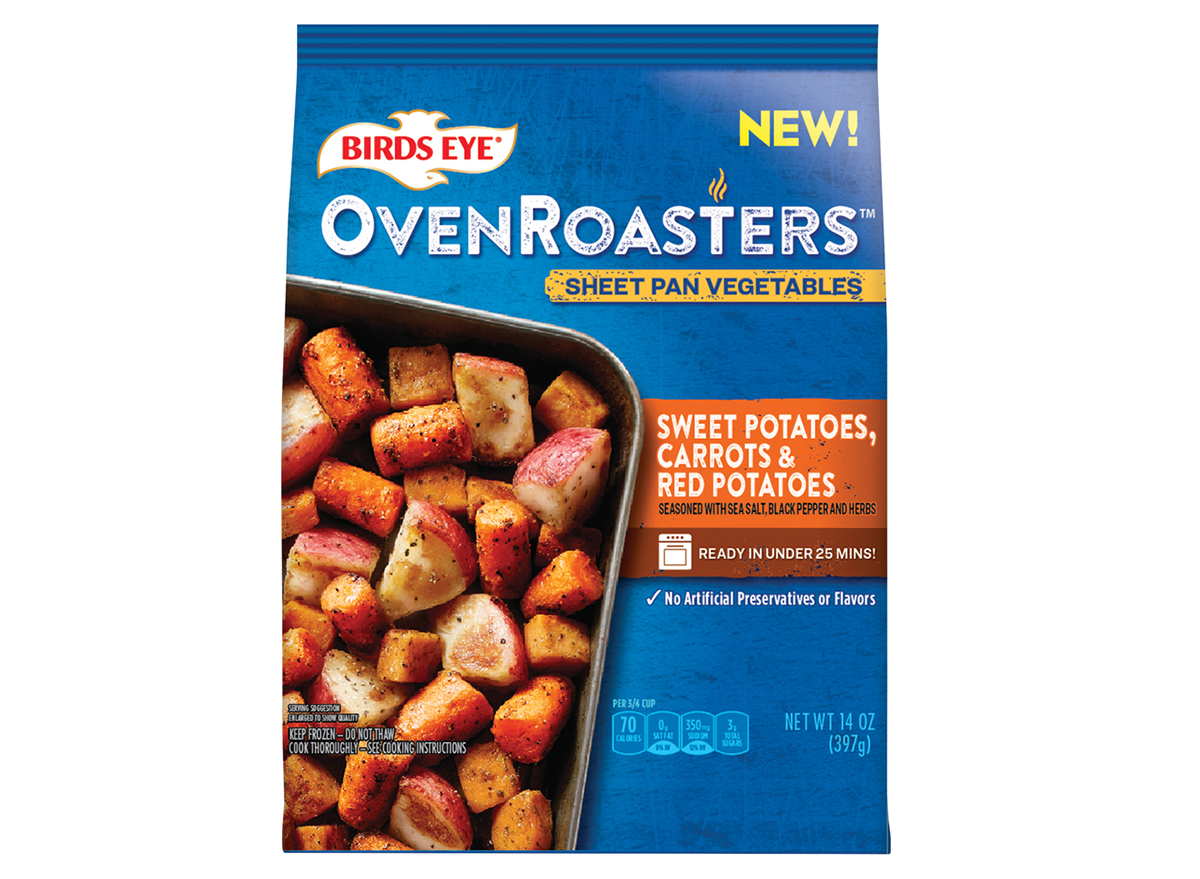
Per 1 serving, 3/4 cup: 70 calories, 2.5 g fat (0 g saturated fat), 350 mg sodium, 11 g carbs (3 g fiber, 3 g sugar), 1 g protein
Birds Eye uses only simple ingredients in this ready-to-bake bag of veggies that will help you get dinner on the table in minutes.
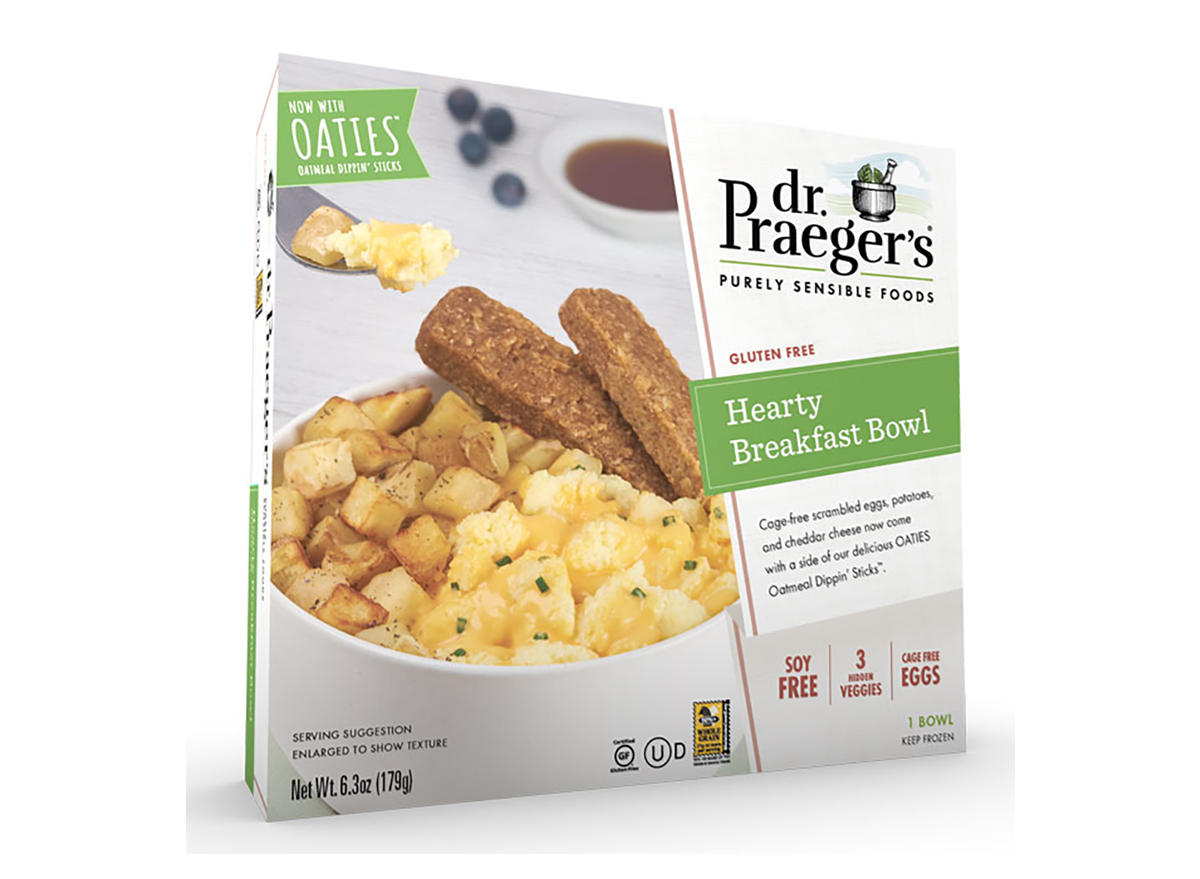
Per bowl: 250 calories, 9 g fat (2.5 g saturated fat), 410 mg sodium, 34 g carbs (6 g fiber, 5 g sugar), 11 g protein
Made with cage-free eggs for a healthy protein punch and hidden veggies for added vitamins, this breakfast is both delicious and nutritious.
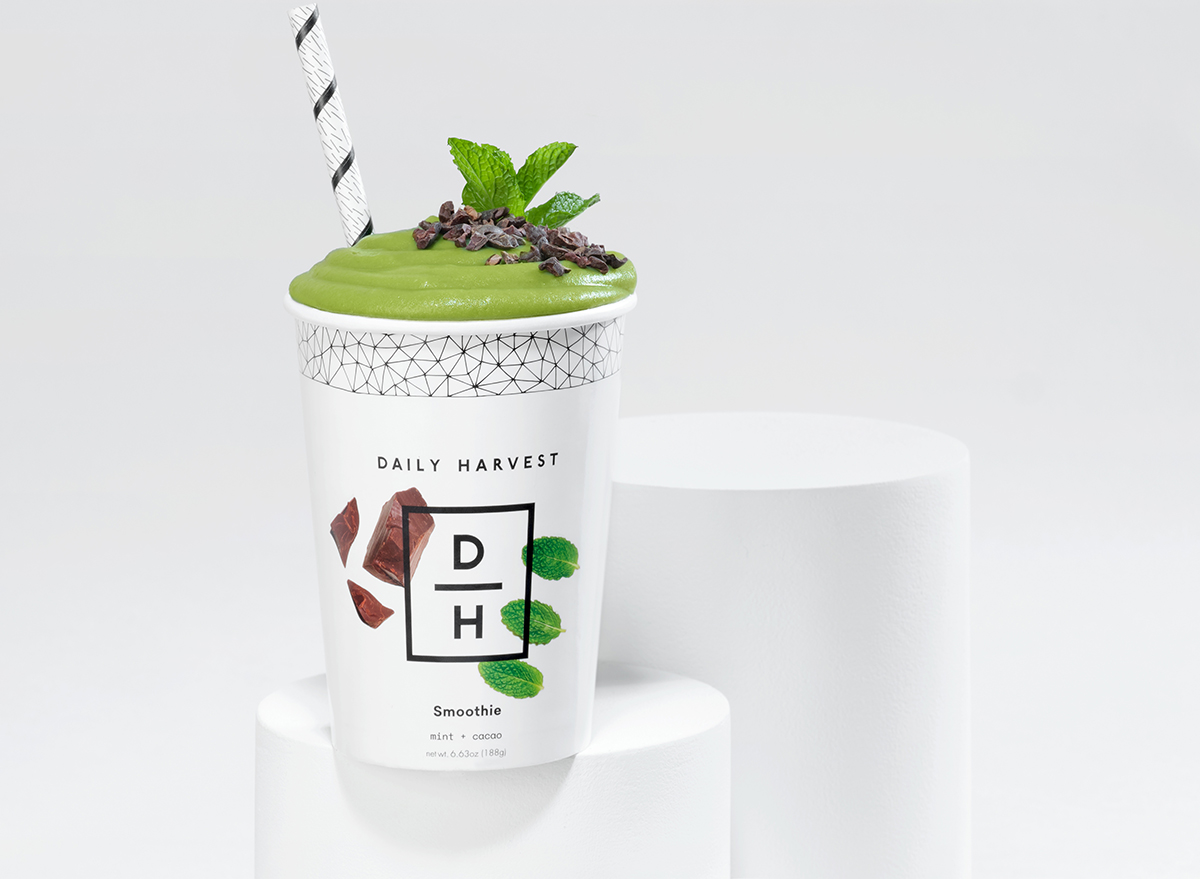
1 cup (208 g): 240 calories, 10 g fat (4 g saturated fat), 40 mg sodium, 37 g carbs (8 g fiber, 17 g sugar), 5 g protein
There is absolutely nothing as refreshing and satisfying as blending up this frozen smoothie cup from Daily Harvest for breakfast. Tell us we're wrong.
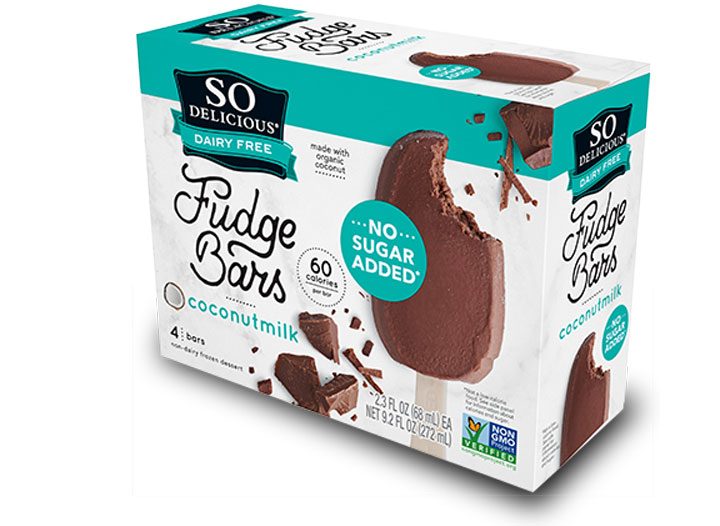
Per 1 bar: 60 calories, 4 g fat (3.5 g saturated fat), 40 mg sodium, 9 g carbs (5 g fiber, <1 g sugar), <1 g protein
Low in sugar and overall calories, this is a good treat to keep in mind even if you're not lactose intolerant. Unlike dairy desserts, this treat's saturated fat content comes from brain-boosting, plant-based MCTs.
Source: https://www.eatthis.com/best-frozen-foods/
0 Response to "How Good Are Frozen Beef Patties After Best by Date"
Publicar un comentario